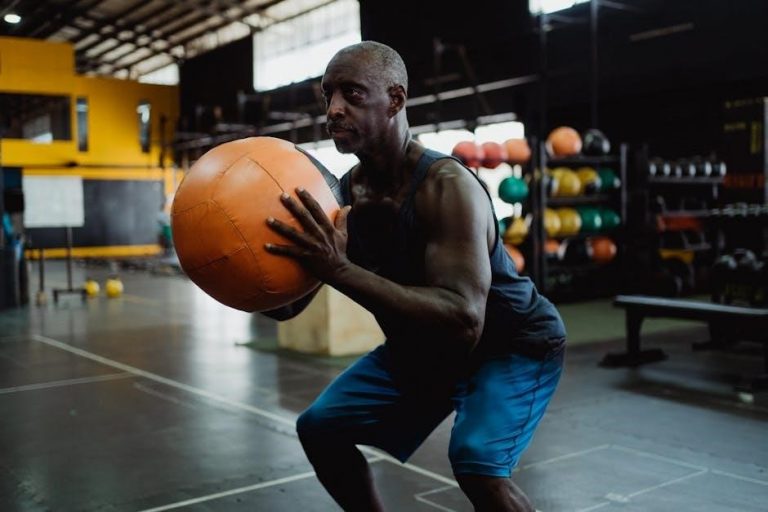Leg Strengthening Exercises⁚ A Comprehensive Guide
This guide explores various leg strengthening exercises‚ emphasizing safety and gradual progression. Consult a physical therapist for personalized plans‚ especially after injury or surgery. Many exercises are suitable for home use‚ with options for different fitness levels and mobility limitations. Remember to listen to your body and stop if you experience pain.
Strong legs are fundamental to overall health and well-being‚ impacting mobility‚ balance‚ and daily activities. Leg strength is crucial for preventing falls‚ a significant concern for older adults and individuals recovering from injury. Weak leg muscles increase the risk of falls‚ leading to fractures and other injuries. Maintaining leg strength is vital for independent living‚ allowing individuals to perform everyday tasks such as walking‚ climbing stairs‚ and getting up from a chair without assistance. Furthermore‚ strong legs contribute to better posture and reduced back pain. A comprehensive leg strengthening program‚ often prescribed by physical therapists‚ can significantly improve quality of life by enhancing mobility and reducing fall risks. This program should always be tailored to individual needs and physical capabilities. Regular exercise is key to maintaining strong legs throughout life.
Types of Leg Strengthening Exercises
Numerous exercises target different leg muscle groups. These include bodyweight exercises like squats‚ lunges‚ and calf raises‚ readily adaptable to various fitness levels. Resistance band exercises add intensity‚ offering adjustable resistance for progressive overload. Chair exercises provide modifications for individuals with limited mobility‚ enabling seated leg strengthening. For those with access to equipment‚ weight machines offer targeted strength training‚ allowing precise muscle isolation and controlled movements. Isometric exercises‚ involving static muscle contractions without movement‚ are beneficial for building strength and improving stability. Each exercise type serves a unique purpose. The selection depends on individual needs‚ goals‚ and physical limitations. A well-rounded program incorporates a variety of exercises to ensure comprehensive leg muscle development. Remember to consult a physical therapist for guidance on choosing the right exercises.
Exercises for Improved Balance and Fall Prevention
Strengthening leg muscles is crucial for balance and fall prevention. Single-leg stance exercises‚ such as holding a one-legged stance for increasing durations‚ challenge balance and improve stability. Heel-toe walking‚ involving stepping heel-to-toe in a straight line‚ enhances coordination and proprioception (body awareness). Tai chi and yoga incorporate slow‚ controlled movements that improve balance and flexibility. These practices are particularly beneficial for seniors. Balance board exercises challenge equilibrium‚ requiring constant adjustments to maintain balance. These activities improve the body’s ability to react to unexpected shifts in weight or surface instability. Remember to start slowly and gradually increase the difficulty. Always perform these exercises in a safe environment‚ using a chair or wall for support if needed. A physical therapist can design a personalized program based on individual needs and capabilities‚ helping to reduce the risk of falls.
Exercises for Hip Strengthening and Stability
Strong hip muscles are essential for stability and mobility. Clamshells‚ performed by lying on one side with knees bent and lifting the top knee‚ strengthen the outer hip muscles. Hip bridges‚ achieved by lying on the back with knees bent and lifting the hips off the floor‚ engage the glutes and hamstrings. Side-lying hip abduction involves lying on one side and lifting the top leg‚ strengthening the hip abductors. These exercises improve hip stability‚ crucial for preventing falls and maintaining balance. Fire hydrants‚ done on hands and knees by lifting one leg out to the side‚ target the hip abductors and improve hip mobility. Hip extensions‚ performed by lying on the stomach and lifting one leg‚ strengthen the glutes and hamstrings. Remember to maintain proper form to avoid strain. Start with a manageable number of repetitions and gradually increase as strength improves. A physical therapist can guide you on appropriate progression and modifications based on your individual needs and any existing conditions.
Exercises for Knee Strengthening and Pain Management
Strengthening the muscles surrounding the knee joint is crucial for stability and pain reduction. Straight leg raises‚ performed by lying on your back and lifting one leg‚ strengthen the quadriceps. Hamstring curls‚ achieved by lying on your stomach and lifting one leg‚ target the hamstrings. Wall sits‚ involving leaning against a wall with knees bent‚ build quadriceps strength. Leg presses‚ using a leg press machine or resistance bands‚ strengthen the quads and hamstrings. Step-ups‚ performed by stepping up and down on a low platform‚ improve leg strength and coordination. These exercises help stabilize the knee‚ reducing pain and improving function. It’s important to maintain proper form to avoid further injury. Start with a low number of repetitions and gradually increase as your strength improves. Listen to your body and stop if you feel any pain. Consult a physical therapist for guidance and modifications tailored to your specific needs and any existing conditions. They can help develop a program that is safe and effective for you.
Exercises for Ankle Stability and Flexibility
Ankle stability and flexibility are essential for balance and preventing injuries. Ankle pumps‚ involving pointing and flexing your feet while seated or lying down‚ improve circulation and range of motion. Alphabet tracing‚ where you trace letters with your toes‚ enhances ankle mobility and coordination. Towel slides‚ achieved by scrunching a towel with your toes‚ strengthen the intrinsic foot muscles. Heel raises‚ performed by lifting up onto your toes‚ strengthen calf muscles and improve ankle stability. Ankle circles‚ rotating your ankles clockwise and counterclockwise‚ increase range of motion and flexibility. These exercises are beneficial for individuals recovering from ankle injuries or those seeking to improve overall lower limb function. Remember to perform these exercises slowly and gently‚ paying attention to your body’s signals. If you feel any pain‚ stop immediately and consult a healthcare professional. Incorporating these exercises into a regular routine can significantly enhance ankle health and reduce the risk of future problems. Always consult a physical therapist for a personalized program.
Chair Exercises for Seniors and Individuals with Limited Mobility
Chair exercises provide a safe and effective way for seniors and those with limited mobility to strengthen their legs. Seated marching‚ lifting one knee at a time towards the chest‚ improves hip and leg strength. Heel slides‚ gently sliding your heels back and forth‚ enhance ankle flexibility and range of motion. Seated leg extensions‚ extending one leg straight out in front‚ strengthen quadriceps muscles. Similarly‚ seated leg curls‚ bringing your heels towards your buttocks‚ strengthen hamstring muscles. Chair stands‚ slowly rising from and lowering into a seated position‚ improve lower body strength and balance. These exercises can be modified to suit individual needs and abilities; For example‚ using the arms for support during chair stands can make the exercise easier. It’s crucial to maintain proper posture during these exercises‚ keeping the back straight and avoiding leaning excessively. Remember to start slowly and gradually increase repetitions and intensity as strength improves. Always consult a healthcare professional or physical therapist to determine suitability and for personalized guidance.
Bed Exercises for Post-Surgery Rehabilitation
Post-surgical leg strengthening often begins with bed exercises to promote healing and prevent complications like blood clots. Ankle pumps‚ involving flexing and pointing the feet‚ improve circulation and prevent stiffness. Straight leg raises‚ lifting one leg at a time a few inches off the bed‚ strengthen the quadriceps muscles. Knee bends‚ bending and straightening the knees while lying down‚ improve knee joint mobility and quadriceps strength. Glute squeezes‚ contracting the buttock muscles‚ enhance hip stability. Heel slides‚ sliding the heels towards the buttocks and back‚ maintain hamstring flexibility. These exercises should be performed slowly and gently‚ avoiding any pain. The number of repetitions and sets should be gradually increased as tolerated. Proper breathing techniques are crucial‚ exhaling during exertion and inhaling during relaxation. It’s vital to follow the specific instructions provided by your physical therapist or surgeon‚ as exercise routines vary depending on the type of surgery and individual needs. Using a rolled towel under the knees for support during some exercises can improve comfort and effectiveness. Progressing to chair exercises will occur once the patient gains sufficient strength and mobility.
Using Resistance Bands for Leg Strengthening
Resistance bands offer a versatile and portable tool for enhancing leg strength and improving range of motion. Their adjustable resistance allows for personalized workouts‚ accommodating various fitness levels. Secure the band around a sturdy object‚ such as a table leg or bedpost‚ at a suitable height. For quadriceps exercises‚ loop the band around one ankle‚ keeping the leg straight. Slowly extend the leg against the band’s resistance‚ then slowly return to the starting position. Hamstring exercises involve sitting with the band around both ankles. Extend one leg while keeping the other leg bent‚ resisting the band’s pull. Hip abduction exercises are done by standing with the band around both ankles‚ slightly wider than shoulder-width apart. Move one leg out to the side‚ resisting the band’s tension. Remember to maintain proper posture throughout the exercises‚ keeping the back straight and core engaged. Begin with a lighter resistance band and gradually increase the resistance as strength improves. Perform multiple sets of repetitions for each exercise‚ gradually increasing the number of sets and reps as tolerated. Always consult with a physical therapist or healthcare professional to determine the appropriate exercises and resistance levels for your specific needs and condition.
Progressive Resistance Exercises⁚ Gradual Progression
Progressive resistance training is crucial for building leg strength safely and effectively. Start with exercises you can comfortably perform with good form‚ focusing on proper technique over the number of repetitions. Begin with a manageable weight or resistance level‚ aiming for 10-12 repetitions per set. As you become stronger‚ gradually increase the resistance or weight. This could involve using heavier weights‚ stronger resistance bands‚ or increasing the number of repetitions or sets. Listen to your body and avoid pushing yourself too hard‚ especially in the initial stages. Rest is essential for muscle recovery and growth. Allow at least one day of rest between workouts to prevent overtraining and injuries. Monitor your progress and adjust your program accordingly. If you’re unsure about how to progress safely‚ consult a physical therapist or certified fitness professional. They can provide guidance on appropriate weight increases‚ exercise modifications‚ and overall program design to ensure a steady and safe progression in your leg strengthening journey. Remember to prioritize proper form to maximize results and reduce the risk of injury.
Safety Precautions and Considerations
Prior to starting any leg strengthening program‚ especially after an injury or surgery‚ consult your doctor or physical therapist. They can assess your condition‚ identify any limitations‚ and create a safe and effective exercise plan tailored to your specific needs. Always warm up before exercising to prepare your muscles and joints. This could involve light cardio‚ such as walking or cycling‚ followed by dynamic stretching‚ like leg swings or torso twists. Pay close attention to your body during exercise. Stop if you feel any sharp pain‚ and don’t push yourself beyond your limits. Maintain proper form throughout each exercise to avoid injury. If you’re unsure about proper form‚ seek guidance from a physical therapist or qualified fitness professional. Cool down after each workout with static stretches‚ holding each stretch for 20-30 seconds. This helps improve flexibility and reduce muscle soreness. Listen to your body and adjust your workout intensity and duration based on your fitness level and energy levels; Regular exercise is beneficial‚ but overtraining can lead to injuries. Maintain hydration by drinking plenty of water before‚ during‚ and after your workouts. Proper hydration supports muscle function and recovery.
Resources and Further Information
For detailed guidance on leg strengthening exercises‚ consult reputable sources like the American Physical Therapy Association (APTA) website. They offer evidence-based information and resources on various physical therapy techniques. Numerous online platforms provide videos demonstrating proper exercise form‚ such as YouTube channels dedicated to physical therapy and rehabilitation. However‚ always verify the credentials of the instructors. Books on strength training and rehabilitation can offer comprehensive programs‚ but choose those authored by qualified professionals. Look for books that include illustrations and detailed instructions to ensure proper technique. Many smartphone apps offer guided exercise programs‚ some even personalized based on fitness levels and goals. Choose apps with a proven track record and positive user reviews. Your physical therapist can provide additional resources‚ including customized exercise plans and referrals to other healthcare professionals as needed. They can also help you interpret information found online or in books to ensure it aligns with your individual requirements and goals. Remember‚ seeking personalized guidance from a healthcare professional is crucial for maximizing benefits and minimizing risks.



